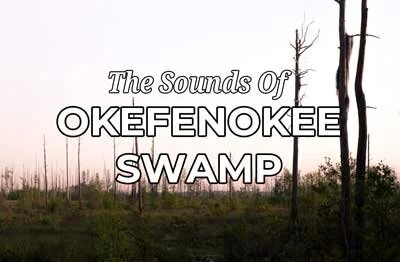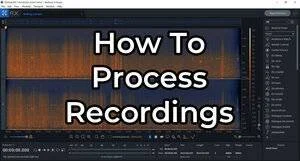Most Successful Trip EVER! Hammersley Wild Area
Join me in the field and behind the scenes of my most successful recording trip to date.
On May 11th, 2022, I made my way to the Hammersley Wild Area in Pennsylvania in pursuit of quiet.
I spent 6 nights in the Hammersley and it was my most successful recording trip to-date.
I experienced zero vehicle noise pollution and only occasional aircraft noise, allowing me to routinely capture noise pollution free recordings during the day.
In total, I added 72 tracks and almost 3 hours of recordings to my sound library.
Table of Contents:
Location
Part of the Susquehannock State Forest, the Hammersley Wild Area totals over 30,000 acres. It is the largest roadless area in Pennsylvania and has been called a “jewel” and a “state treasure” by the Pennsylvania Audubon Society.
I was originally attracted to the Hammersley while studying a light pollution map. I was surprised to see such a large, Class 2 dark sky in the middle of Pennsylvania.
It really stands out on the map in an otherwise heavily polluted region encircled by major cities like Cleveland, Pittsburgh, Philadelphia, and New York.
It’s no surprise that Cherry Springs State Park, just north of the Hammersley is a popular destination for astronomers. It’s consistently rated as one of the top 7 best stargazing places worldwide.
After my interest was piqued, I went to AllTrails to see what hiking trails existed in the area.
With many options to choose from, I settled on the Twin Sisters Trail. The trail was short, easily accessible, and 3.5 miles away from the closest primary road.
Hiking from north to south, the trek was only 2.5 miles to an incredible vista made possible by a forest fire in 1964.
Video
This Behind The Sounds (BTS) episode is free for all viewers.
To watch the full BTS series and unlock a bunch of other rewards, please consider becoming a Patreon.
Rewards include:
Access to all BTS episodes
Digital copy of Field Recording For Beginners
Free BandCamp albums
1-on-1 conversation with me to ask questions, receive critiques on your work, or to nerd out on gear
As a nature field recordist, I have several expenses that must be covered in order to continue Seeking Silence.
Backpacking food and gas are my primary expenses. Your support really goes a long way in helping me do what I love. Thank you to all those who have become Patreons already!
Photos
Sounds
Wind
The site of the wild fire was dominated by impressive black cherry trees and featured a few stands of spruce. There was a large clearing of dead and dried ferns from the past season and new fronds were just beginning to emerge.
Due to the lack of vegetation in this clearing and its high elevation, near constant winds blew through the region and was one of the first sounds I sought out to capture.
Lewitt 540 SubZero mics mounted in SASS.
Here, I used my new recording set up consisting of Lewitt 540 SubZero mics mounted in a SASS array, recording to a Zoom F3. I prefer the stereo image of the SubZeros in the SASS versus ORTF.
For wind protection, I used two winter hats layered over the SASS. Some wind noise leaked through during particularly strong gusts, but this was intentional. Since we actually hear those low frequency rumbles when wind contacts our ears, a little wind leak sounds realistic.
For a few days, my goal was windy ambiences. I experimented with different locations, different vegetation and different microphone heights and angles.
Water
The “Sound Staff” technique.
One of the downsides of camping on the peak was lack of water access. Almost every day, I hiked down the mountain and drove 3 miles to the STS trail. After a one mile hike, I reached the Hammersley Fork, where I could refill my water stores.
Besides being a lifeline, the Hammersley Fork was also a great recording opportunity. Here, I brought out my “sound staff”, a recording technique that I learned in episode 10.
The sound staff is a mobile recording technique consisting of a tripod or monopod-mounted microphone and body-mounted recorder.
I clip the Zoom F3 to my belt and power it with a power supply I store in my backpack hip pocket.
I love this technique for exploring an area while constantly monitoring the live audio of my surroundings. This technique deeply connects me to the sounds around me and is great for capturing different sound expressions of a source while experimenting with angle, distance, and height.
The best part is that the rig is always ready to record. No need to set up or break down gear between locations.
Using this technique, I recorded several segments of the river.
Thunder
Tree hollow rain protection.
Near the end of my trip, thunderstorms rolled into the Hammersley. Since I don’t yet have a rain protection solution for my SASS, I looked for natural rain protection.
There were several trees with large, hollow cavities, and I thought that they would be perfect for shielding my microphones from the rain.
While location scouting, I frequently clapped my hands together and listened to how the sound reverberated throughout the landscape.
I ended up settling on a tree tucked in the corner of a clearing that had excellent surrounding acoustics.
Dawn Chorus
Not only did this location offer ideal rain protection, it also captured an incredible recording of the dawn chorus the following morning. You can really hear the reverberant landscape during the drumming of woodpeckers.
Final Thoughts
This trip was incredible, both in sights and sounds. I look forward to revisiting this location in the future and capturing the Hammersley’s sounds throughout the seasons.
Please leave a comment on this post to let me know if you enjoyed this narration-style Behind The Sounds Episode.
Support Acoustic Nature
If you enjoyed this post and would like to help support Acoustic Nature, please consider "buying me a coffee" or becoming a Patreon with the buttons below.
As a thank you for your support, Patreon supporters receive a copy of Field Recording For Beginners, exclusive access to the full Behind The Sounds video series, nature sound library downloads, and more.
If you are unable to support the site financially, please share this post with others, or leave a comment below letting me know you enjoyed this post! Both are free and help the website grow. Thank you ♫
Thanks for reading,
-Jared

























